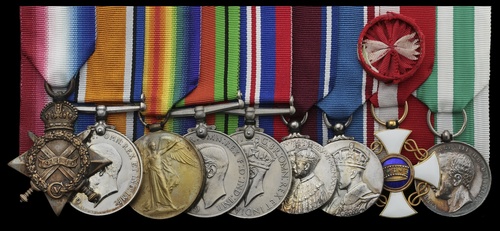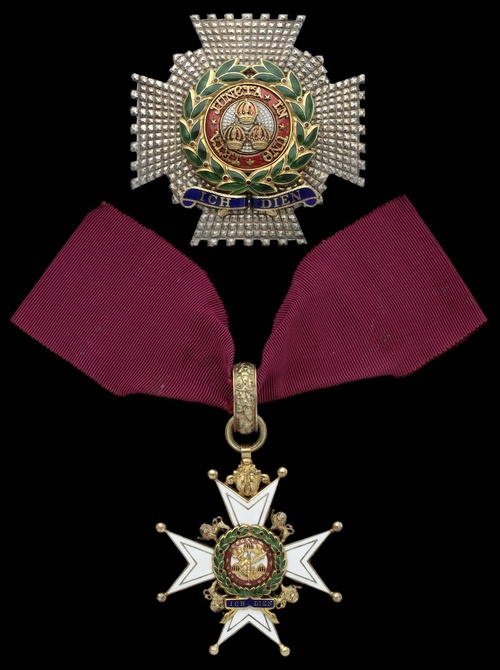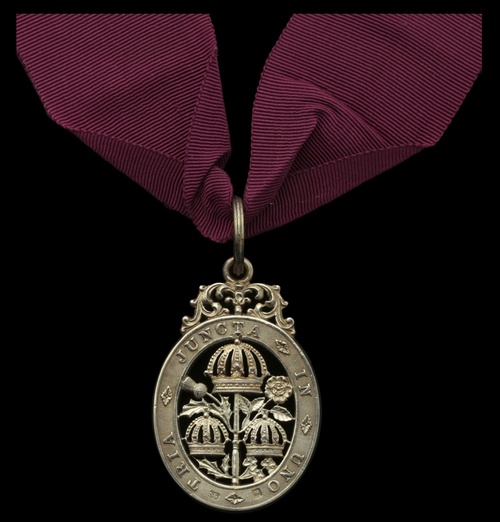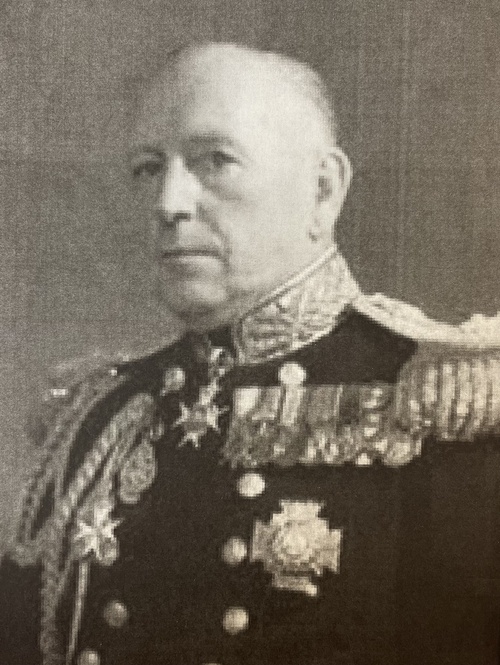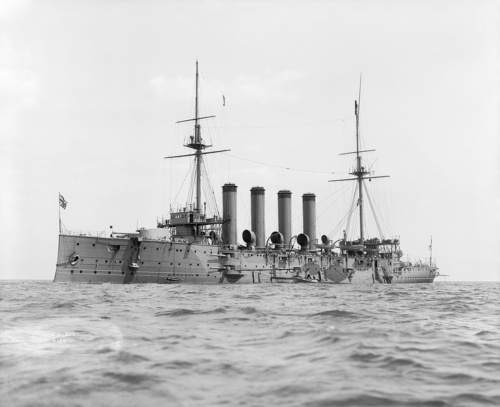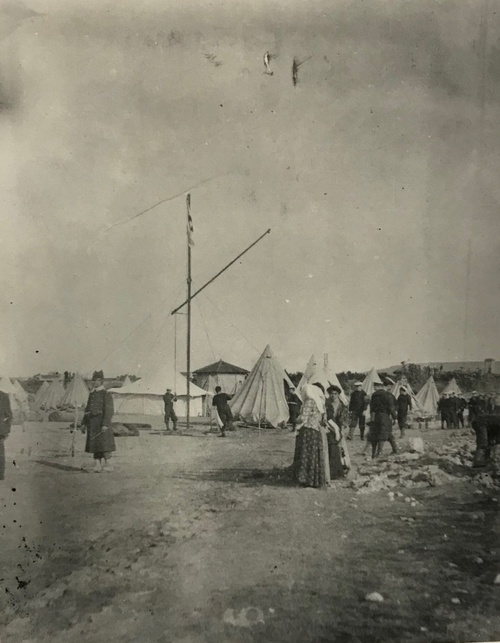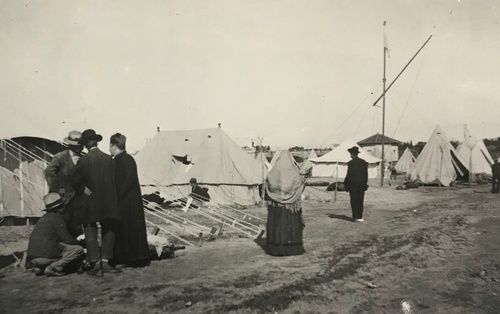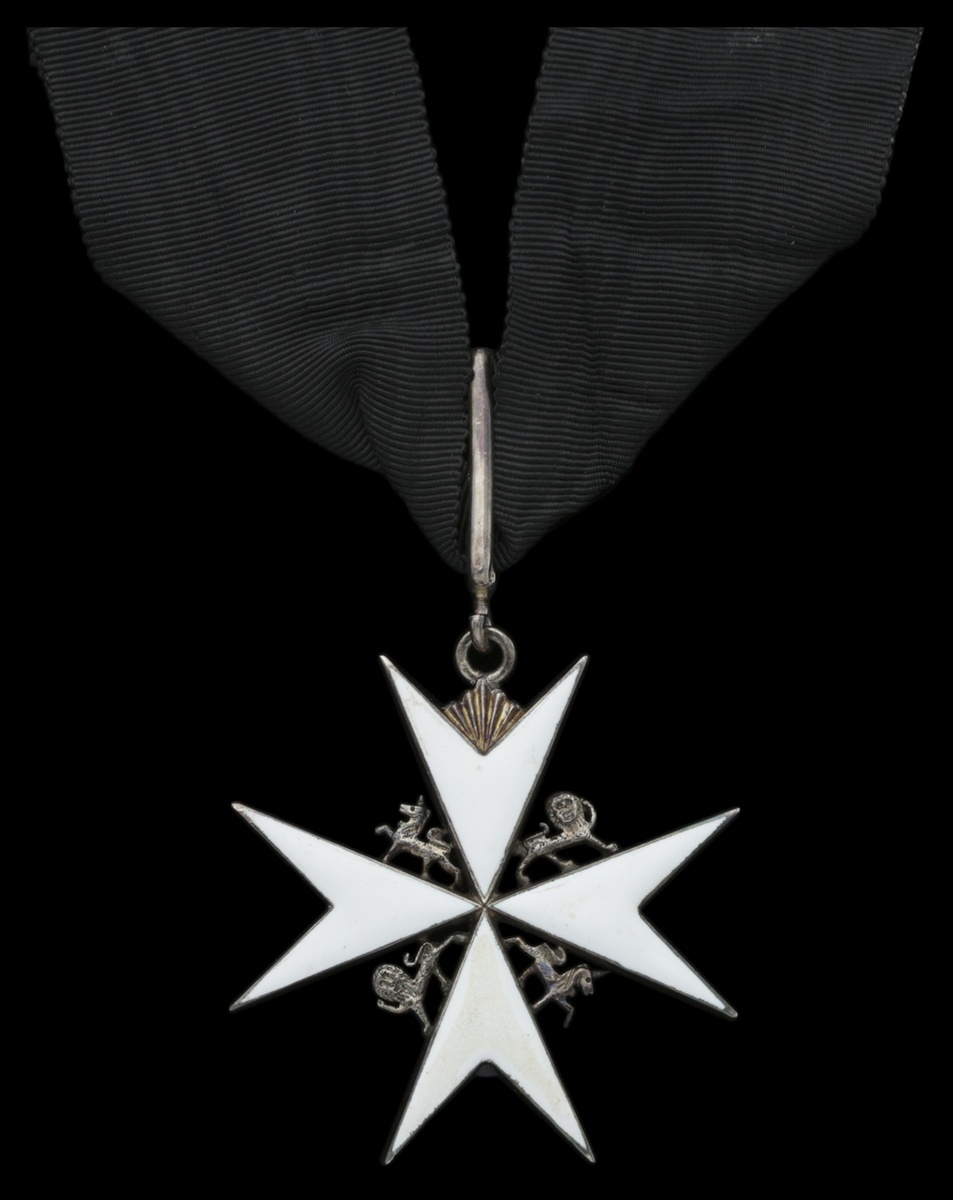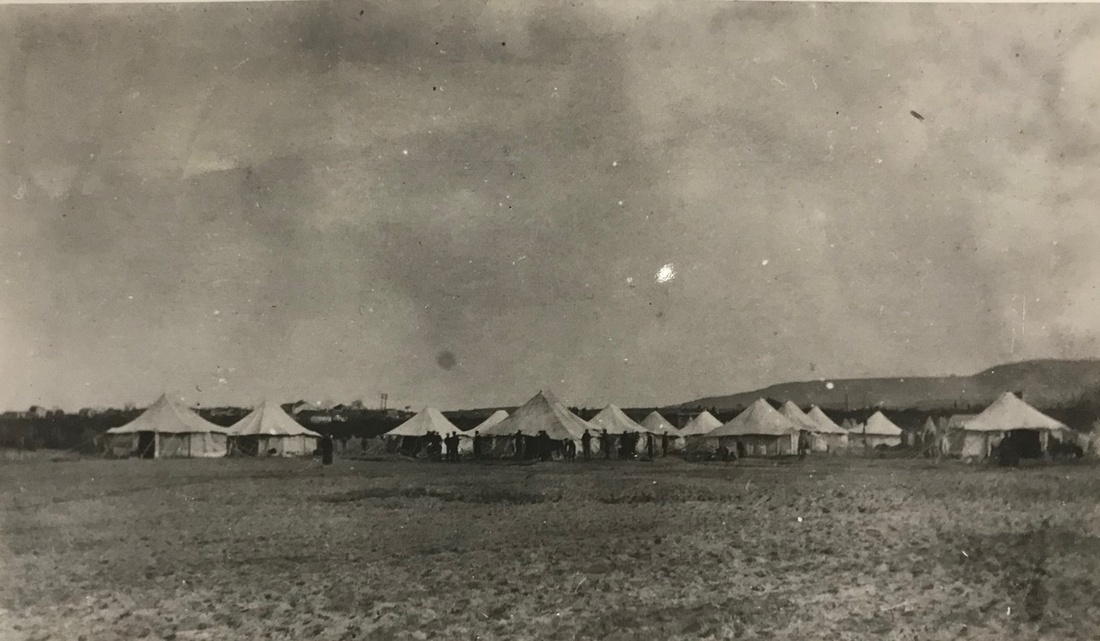Auction: 22003 - Orders, Decorations and Medals
Lot: 426
The 1939 K.C.B., Civil C.B., Order of St. John, group of twelve awarded to Surgeon Vice-Admiral P. T. Nicholls, Royal Navy
Having been present in the aftermath of the 1908 Messina Earthquake, he was duly decorated for his fine work; during the Great War he was lucky indeed to escape the famous 'Broad Fourteens disaster', when on 22 September 1914 he survived the loss of Aboukir, Hogue and Cressy, eventually being fished out of the North Sea and made a Prisoner of War
On that day he was described as having 'conducted himself with great gallantry on this occasion when he was required to transfer himself and casualties from one ship to another, and finally to safety as disaster overcame each turn' and was briefly interned in the Netherlands, Nicholls rose to become Medical Director-General of the Royal Navy
The Most Honourable Order of the Bath, K.C.B. Military Division, Knight Commander's set of Insignia, comprising neck Badge and breast Star in silver-gilt, silver and enamel; The Most Honourable Order of the Bath, C.B. Civil Division, Companion's neck badge , in silver-gilt; The Most Venerable Order of St.John, Commander's neck badge in silver and enamel; 1914-15 Star (St. Surg. P. T. Nicholls, R.N.); British War and Victory Medals (Surg. Commr. P. T. Nicholls. R.N.); Defence and War Medals 1939-45; Jubilee 1935; Coronation 1937; Italy, Kingdom, Order of the Crown, Officer's 4th Class breast Badge, gold and enamel; Italy, Kingdom, Messina Earthquake 1908, campaign medals mounted as worn, some very light enamel damage to the Order of the Crown, adhesive to the reverse of the St. John Badge and Bath neck Badge, very fine (12)
K.C.B. (Military) London Gazette 8 June 1939.
C.B. (Civil) London Gazette 4 June 1934.
O. St. John. London Gazette awarded 1937.
Italian Order of the Crown awarded 1908 and confirmed 15 April 1912.
Percival Thomas Nicholls was born on 8 May 1877 at Tavistock, Devon. He was the son of Harry and Ellen Nicholls. He studied medicine at the Middlesex Hospital and qualified M.R.C.S. England and L.R.C.P. London in 1900, after which he held the posts of House Physician at the Middlesex Hospital and House Surgeon at the Sussex County Hospital.
He entered the Royal Navy as a Surgeon on the 10 August 1901 and served for short periods in a number of ships and establishments to include Nautilus and Lizard. He was present at the aftermath of the Messina earthquake serving aboard Exmouth and was awarded the Order of the Crown of Italy (4th Class) for his valuable services whilst serving at the Catona Field Hospital, one of only 19 Officer awards. He was promoted Staff Surgeon on the 10 August 1909.
Nicholls served with distinction throughout the First World War, he was on board Hogue at the Battle of Heligoland on the 22 September 1914, when the German submarine U-9 captained by Otto Weddigen accounted for Cressy, Hogue and Aboukir in quick succession. Nicholls conducted himself with great gallantry on this occasion when he was required to transfer himself and casualties from one ship to another, and finally to safety as disaster overcame each in turn. He was interned in the Netherlands for two weeks but was subsequently released. He was promoted to Surgeon Commander on 10 August 1915 and was successively Senior Medical Officer on Leander October 1915-January 1916; Greenwich June 1916-October 1917; Agamemnon October 1917-March 1919 and Valiant June 1919-April 1920.
His obituary gives further detail:
'By the end of the Great War Nicholls had gained in mental stature from his wealth of versatile experience during his seventeen years' service. A tall, handsome athletic figure who had represented the Navy at tennis, he had now developed qualities which began to place him in the front rank of naval medical officers at that time. A born administrator possessed of a sound clinical sense, he was given every opportunity to display his recognized talents to the full.
In 1926, he was promoted Surgeon Captain and a year later he became Principal Medical Officer of the Royal Naval Barracks, Portsmouth. In 1929 he became Senior Medical Officer of the Medical Section of the Royal Naval Hospital, Haslar, and it is during this particular three-year tenure of office that so many senior medical officers came to appreciate the quiet and valuable guidance which he was always so ready to offer them during their early days in the Service. His residence at Haslar was always to be regarded as a home from home for young doctors who soon found themselves accepted by Mrs Nicholls and her charming daughters as members of a happy family.
In 1932 Nicholls was promoted to Surgeon Rear-Admiral and his appointment as Medical Officer-in-Charge of the Royal Naval Hospital, Malta, came as a surprise to nobody but the man himself. At a time when he was making serous preparations for impending retirement, he became the victim of sudden advancement for which he considered himself quite unworthy. Nevertheless, with characteristic determination, he left for Malta with the object that the medical arrangements in his hospital there and in the Mediterranean Fleet should reach the highest possible peak of efficiency under his command. In this task he succeeded. He was awarded a C.B. (Civil) in June 1934 and shortly afterwards became an Honorary Physician to the King from 1935-1952. He was also made a Commander of the Order of St John in 1937.
Nicholls' time at Bighi was never easy, because it coincided with the closure of the peaceful days in Malta and the gradual development of that period of restless pressure associated with the conflicts in Abyssinia and Spain and the troubles in Palestine which preceded the ultimate conflagration of the Second World War.
By the time his appointment in Malta had ended Nicholls had so impressed his personality upon his executive superiors while ever untiring in his efforts to improve conditions inside the Royal Naval Medical Service that his subsequent appointment as Medical Director-General of the Navy was regarded by knowledgeable medical officers as a foregone conclusion. In fact, had this appointment not been made, there would have been great disappointment throughout the whole Medical Branch of the Navy. The appointment itself was made on the 2 July 1937, and gave great general satisfaction. He was promoted to K.C.B. (Military) in June 1939 and in 1940 was elected a Fellow of the Royal College of Surgeons.
Nicholls must go down to posterity as one of the Royal Navy's greatest Medical Directors-General, and he held the appointment until 2 July, 1941. This meant that he was first faced with the formidable task of bringing the medical arrangements of the Navy up to a state of preparation for a major war. Having successfully achieved this object, itself a work of the greatest magnitude, he then entered upon a phase which was even more strenuous, that of implementing what he had planned in the face of an ever-changing pattern of hostilities. It is well to remember that it was Percy Nicholls who shouldered the burden of guarding the medical services of the Royal Navy from collapse during the agonizing period of the Nation's adversity and when ships, medical man-power and supplies were in great demand but short supply. Throughout these days of stress he remained unperturbed, and a model of leadership to his staff to whom he was always approachable with their problems.
When he eventually retired, it was not to enjoy that rest which he so merited, because he soon offered himself for re-employment, and served, in the rank of Surgeon Captain, as Medical Officer-in Charge of the Royal Naval Auxiliary Hospital, Kilmacolm, from the 14 January 1942-10 July 1946.'
Admiral Nicholls was appointed C.B. in 1934 and elevated to K.C.B. in 1939. In 1937 he was appointed Commander of the Venerable Order of the St John of Jerusalem. He was an Honorary Physician to the King from 1935-52. In 1940 he was elected a Fellow of the Royal College of Surgeons. During his retirement he resided at Havant in Hampshire and died at Haslar on 1 March 1959; sold with detailed research to include copied Officer's service papers and assorted photographs.
Subject to 20% VAT on Buyer’s Premium. For more information please view Terms and Conditions for Buyers.
Estimate
£4,000 to £6,000
Starting price
£3500

